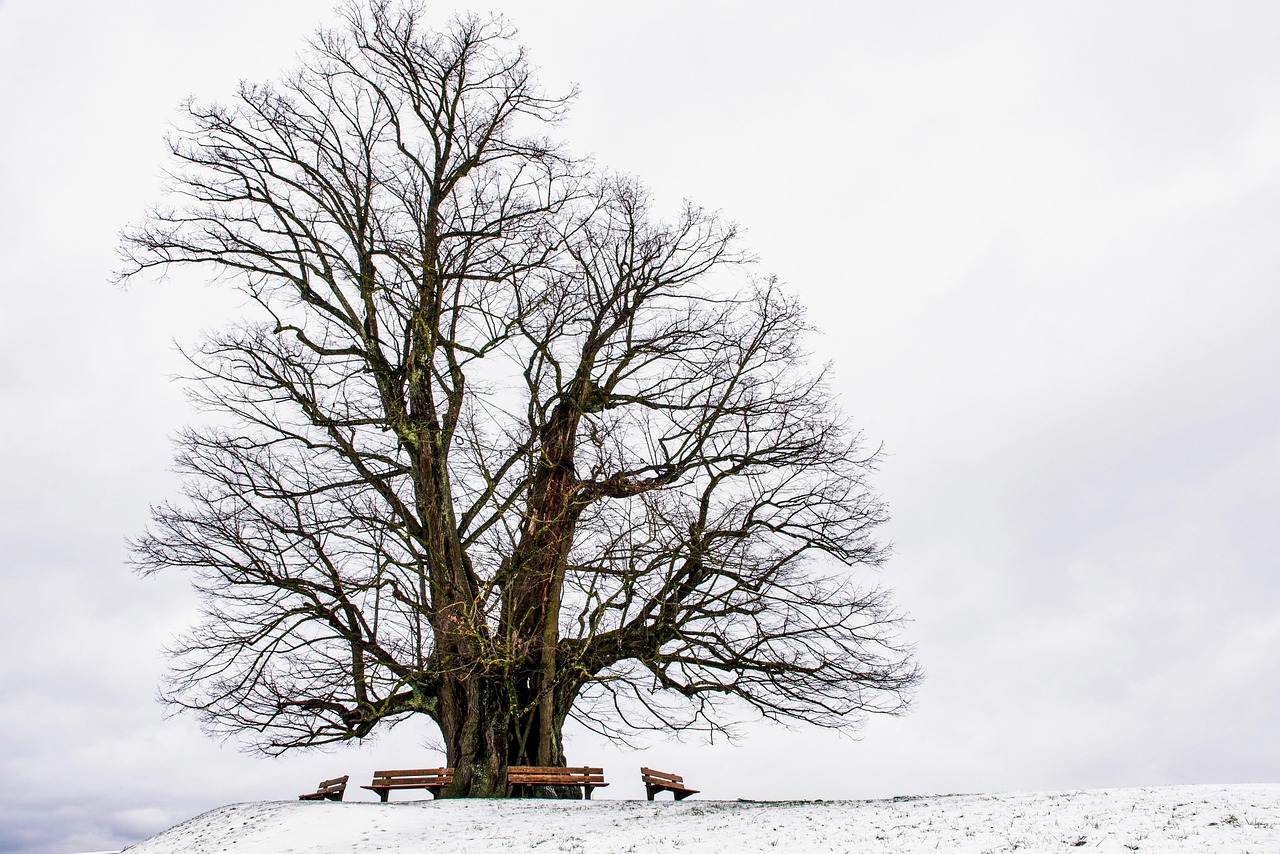Trees were named by early humans based on their characteristics, uses, and habitats. They hold immense importance as they provide oxygen, improve air quality, conserve water, preserve soil, and support wildlife. Their naming reflects cultural values and ecological relationships.
Understanding the Naming of Trees
The naming of trees dates back to ancient civilizations. Early humans relied on trees for survival. They provided food, shelter, and materials for tools. As people began to understand their environment better, they started to categorize trees based on various factors. These factors included size, shape, leaf type, and even the uses of the wood.

In many cultures, trees hold significant symbolic meaning. For instance, the oak tree symbolizes strength and endurance, while the willow stands for flexibility and healing. Names often reflect these attributes, linking the tree to its practical or symbolic meanings within a community.
Throughout history, different cultures have contributed to the naming of trees. The scientific classification we use today was largely developed by Carl Linnaeus in the 18th century. He introduced a system of binomial nomenclature that assigns each species a two-part Latin name. This method has helped standardize names across different regions and languages.
Importance of Trees in Ecosystems
Trees play a crucial role in maintaining ecological balance. They provide habitat for numerous species and contribute to biodiversity. Here are some key roles that trees fulfill in ecosystems:

- Oxygen Production: Through photosynthesis, trees convert carbon dioxide into oxygen, which is essential for life on Earth.
- Carbon Sequestration: Trees absorb carbon dioxide, helping mitigate climate change by reducing greenhouse gases in the atmosphere.
- Soil Conservation: The roots of trees help prevent soil erosion by holding the soil in place.
- Water Cycle Regulation: Trees play a role in the water cycle by facilitating groundwater recharge and maintaining local humidity levels.
Economic and Social Significance
Trees are not only important ecologically but also economically and socially. They provide resources that are vital for human life. Here are a few examples:
| Resource | Description | Importance |
|---|---|---|
| Wood | Used for construction, furniture, and paper products. | Supports industries and economies worldwide. |
| Fruits and Nuts | Source of food for humans and wildlife. | Nourishment and economic activity through agriculture. |
| Medicinal Products | Certain trees provide compounds used in medicine. | Essential for health and pharmaceutical industries. |
Socially, trees enhance urban environments by providing shade, improving aesthetics, and creating recreational spaces. Communities often gather around parks filled with trees, fostering connections among residents. This interaction with nature can lead to improved mental health and well-being.
Cultural Significance of Trees
Trees have been revered in various cultures throughout history. They often hold spiritual significance and are featured in mythology and folklore. Many cultures have designated sacred trees that serve as symbols of life and continuity. For example:

- The Bodhi Tree is significant in Buddhism as the place where Siddhartha Gautama attained enlightenment.
- The Cedar of Lebanon is mentioned in the Bible and symbolizes strength and protection.
- The Banyan tree serves as a gathering place in many Indian communities.
The naming of trees can reflect these cultural values and beliefs. Understanding the names of trees can deepen our appreciation for their role in our lives and the environment. By recognizing their importance, we can foster a greater commitment to preserving these vital resources for future generations.
The Biological Classification of Trees
The scientific study of trees involves understanding their biological classification. This classification is essential for recognizing different species and their characteristics. Trees are categorized under the kingdom Plantae, and within that, they fall into various divisions, classes, and families. The system allows scientists and researchers to communicate effectively about species across different regions.
Trees can be broadly classified into two main categories: angiosperms and gymnosperms. Angiosperms are flowering plants that produce seeds enclosed within a fruit. Gymnosperms, on the other hand, produce seeds that are not enclosed in a fruit. Here is a brief overview of these classifications:
| Type of Tree | Characteristics | Examples |
|---|---|---|
| Angiosperms | Produce flowers and seeds in fruits; broadleaf trees. | Maple, Oak, Cherry |
| Gymnosperms | Seed-producing; usually coniferous; needle-like leaves. | Pine, Spruce, Cedar |
Role of Trees in Climate Regulation
Trees significantly influence climate regulation. They help stabilize temperatures, reduce heat, and maintain humidity levels. The presence of trees in urban areas can lead to cooler environments. This phenomenon is often referred to as the “urban heat island” effect, where cities experience higher temperatures due to human activities and infrastructure.

Moreover, trees play a vital role in carbon sequestration. This process involves the absorption of carbon dioxide from the atmosphere, reducing the impact of climate change. The following points highlight how trees contribute to climate regulation:
- Trees absorb carbon dioxide during photosynthesis, storing carbon in their biomass.
- Forests act as carbon sinks, retaining carbon for extended periods.
- The transpiration process releases water vapor, influencing local weather patterns.
The Economic Value of Trees
The economic value of trees extends beyond their immediate products. They contribute to various industries, from timber to pharmaceuticals. Sustainable forestry practices ensure that tree resources can be harvested without depleting forests. Here are several economic benefits associated with trees:
- Timber Industry: Trees provide raw materials for construction and manufacturing.
- Agriculture: Agroforestry combines crops with tree planting for improved yield and biodiversity.
- Tourism: Forested areas attract tourists for recreation and eco-tourism, boosting local economies.
Social Benefits of Urban Trees
Urban trees contribute significantly to the quality of life in cities. They offer various social benefits that enhance community well-being. The presence of trees in urban areas has been linked to improved mental health and physical activity levels among residents. Key social benefits include:
- Aesthetic Value: Trees beautify neighborhoods and add character to urban landscapes.
- Noise Reduction: Trees help absorb sound, creating quieter environments.
- Community Cohesion: Parks and green spaces foster interactions among residents.
The Connection Between Trees and Biodiversity
Trees are essential for maintaining biodiversity. They serve as habitats for countless species of animals, insects, fungi, and plants. A diverse habitat supports ecological resilience, ensuring that ecosystems can adapt to changes and recover from disturbances.
The interdependence between trees and wildlife is crucial for ecological balance. Trees provide food sources such as fruits, nuts, and leaves for various species. In return, animals assist in pollination and seed dispersal, promoting tree reproduction. Here are some examples of how specific animals interact with trees:
- Birds: Many birds rely on trees for nesting sites and food sources.
- Insects: Pollinators such as bees play a vital role in tree reproduction by facilitating flower pollination.
- Mammals: Animals like squirrels depend on trees for shelter and sustenance.
The conservation of trees is therefore critical not only for human needs but also for sustaining the planet’s biodiversity. Efforts to protect forests and promote reforestation can help restore habitats and support the myriad forms of life that depend on trees.
Threats to Trees and Forests
Despite their importance, trees and forests face numerous threats around the globe. These threats can lead to significant ecological, social, and economic consequences. Understanding these dangers is crucial for effective conservation efforts. The primary threats include deforestation, climate change, and pests and diseases.
Deforestation
Deforestation is one of the most pressing issues affecting trees. It involves the permanent removal of forests to make way for agriculture, urban development, and infrastructure projects. The consequences of deforestation are far-reaching:
- Habitat Loss: Deforestation destroys the habitats of countless plant and animal species, leading to declines in biodiversity.
- Increased Carbon Emissions: Trees act as carbon sinks. Their removal releases stored carbon back into the atmosphere, contributing to global warming.
- Soil Erosion: Without tree roots to anchor the soil, erosion rates increase, leading to loss of fertile land.
Climate Change
Climate change poses a significant threat to trees as it alters temperature and precipitation patterns. These changes can have various impacts on forests:
- Altered Growth Patterns: Changes in temperature can affect the growth cycles of trees, impacting their health and productivity.
- Pest Infestations: Warmer climates can lead to increased pest populations that harm trees.
- Forest Fires: Higher temperatures and prolonged droughts increase the risk of wildfires, which can devastate large forest areas.
Pests and Diseases
Trees are also vulnerable to pests and diseases that can weaken or kill them. Some notable pests include:
- Bark Beetles: These insects bore into tree bark, disrupting nutrient flow and often leading to tree death.
- Gypsy Moths: They feed on the leaves of various trees, especially oaks, leading to defoliation.
- Fungal Infections: Diseases caused by fungi can cause decay and weaken trees, making them more susceptible to other threats.
The Role of Conservation Efforts
Conservation efforts play a critical role in protecting trees and forests from these threats. Various strategies have been employed globally to conserve tree populations and restore damaged ecosystems. Here are some key approaches:
Sustainable Forestry Practices
Sustainable forestry focuses on managing forest resources responsibly. This practice ensures that timber harvesting occurs without compromising the forest’s health. Key components include:
- Selective Logging: Instead of clear-cutting, selective logging removes only certain trees, preserving the overall ecosystem.
- Reforestation: Planting new trees in areas where forests have been cut down helps restore ecosystems and improve biodiversity.
- Certification Programs: Initiatives like the Forest Stewardship Council (FSC) certify sustainably managed forests, encouraging responsible consumer choices.
Protected Areas and Reserves
Establishing protected areas is essential for conserving biodiversity. National parks and nature reserves help safeguard forests from development and exploitation. Benefits of protected areas include:
- Biodiversity Conservation: Protected areas serve as sanctuaries for countless species, allowing ecosystems to thrive.
- Research Opportunities: These areas provide invaluable settings for scientific research on ecology and conservation methods.
- Public Awareness: Protected areas educate visitors about the importance of conservation and promote appreciation for natural environments.
Community Engagement
Involving local communities in conservation efforts is vital for sustainability. Engaged communities are more likely to support conservation initiatives. Strategies for community involvement include:
- Education Programs: Informing residents about the importance of trees fosters a sense of responsibility for local ecosystems.
- Sustainable Practices: Encouraging sustainable land use practices empowers communities to balance their needs with environmental conservation.
- Community Forest Management: Allowing communities to manage local forests promotes stewardship and sustainable resource use.
The Future of Trees in a Changing World
The future of trees hinges on our collective efforts to address the challenges they face. As climate change continues to evolve, adaptive management strategies will be essential to ensure the resilience of forests. Continued research is necessary to develop innovative solutions that protect trees while meeting global economic demands.
The integration of technology in conservation efforts, such as using satellite imagery for monitoring deforestation or employing drones for reforestation projects, represents exciting advancements in this field. By embracing these innovations and promoting global cooperation, we can work toward a more sustainable future where trees continue to thrive alongside human development.
The Importance of Education and Advocacy
Education and advocacy play essential roles in fostering a deeper understanding of trees and their significance in our lives. By raising awareness of the critical functions trees serve, we can inspire actions that lead to their preservation. Here are some methods to promote education and advocacy:
- Public Awareness Campaigns: Initiatives that highlight the benefits of trees can encourage communities to engage in tree planting and conservation efforts.
- School Programs: Educational programs focusing on environmental science can teach children about the importance of trees from an early age, nurturing a generation of environmentally conscious individuals.
- Community Workshops: Hosting workshops that educate community members about local tree species, proper planting techniques, and maintenance can empower citizens to take action.
Global Cooperation for Tree Conservation
Addressing the threats to trees requires global cooperation. Many environmental issues transcend national borders, necessitating collaborative efforts among countries. International agreements and organizations work to promote sustainable forestry practices and protect global forest ecosystems. Some of these initiatives include:
- The United Nations Framework Convention on Climate Change (UNFCCC): This agreement aims to combat climate change by reducing greenhouse gas emissions, which includes protecting forests.
- The Convention on Biological Diversity (CBD): This treaty focuses on conserving biodiversity and ensures that tree species are protected as part of global biodiversity efforts.
- The Forest Stewardship Council (FSC): This organization promotes responsible forest management worldwide, ensuring that forests are managed sustainably.
Innovative Solutions in Tree Conservation
Innovative solutions are emerging that leverage technology and scientific research to enhance tree conservation efforts. These advancements can help mitigate the threats faced by trees and promote sustainable practices:
- Remote Sensing: Satellite imagery and drones enable the monitoring of forest health, deforestation rates, and the effectiveness of conservation strategies.
- Genetic Research: Understanding the genetic diversity among tree species can improve reforestation efforts and ensure the resilience of forests against climate change.
- Urban Forestry Initiatives: Cities are increasingly recognizing the value of urban trees, leading to initiatives that integrate trees into urban planning for improved air quality and community health.
Final Thoughts
The naming of trees is not merely a classification system; it reflects humanity’s relationship with nature. Trees are vital for countless ecological, social, and economic reasons. They provide clean air, habitat for wildlife, resources for various industries, and psychological benefits for people living in urban environments. Understanding the importance of trees can foster a deeper appreciation for our natural world.
As we face increasing challenges such as climate change, deforestation, and loss of biodiversity, our collective responsibility towards tree conservation becomes more critical than ever. By engaging in sustainable practices, advocating for policies that protect forests, and educating ourselves and others about the importance of trees, we can help ensure their survival for future generations.
The future of trees lies in our hands. Through concerted efforts in conservation, education, and innovation, we can protect these invaluable resources, allowing them to thrive alongside human development. Together, we can create a world where trees continue to flourish, providing essential benefits that sustain life on Earth.
